Golf
Rory McIlroy: The Rise of Golf’s Northern Star
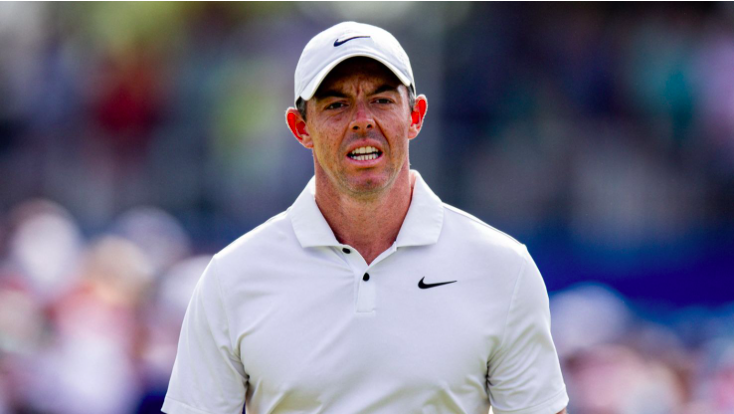
Rory McIlroy: The Rise of Golf’s Northern Star
Rory McIlroy, a Northern Irish golfer, has quickly become one of the sport’s brightest stars. With four major championships and numerous other titles, McIlroy’s powerful driving and consistent performance have earned him a place among the best. His commitment to fitness and advocacy for the sport’s growth continue to influence golf’s future.
Early Life and Introduction to Golf
A Prodigy from Northern Ireland
Born on May 4, 1989, in Holywood, Northern Ireland, Rory McIlroy showed an early passion for golf. Encouraged by his father, Gerry McIlroy, who was an excellent golfer himself, Rory started swinging a club almost as soon as he could walk. His talent was evident from a young age, and he began competing in local tournaments, quickly making a name for himself.
Junior and Amateur Success
Rory’s junior golf career was marked by numerous victories and accolades. He won the World Championship for the 9-10 age group at Doral Golf Resort & Spa in Miami, Florida. His amateur career continued to flourish, with notable performances including winning the European Amateur Championship in 2006. These early successes laid the groundwork for his professional career.
Turning Professional and Early Achievements
The Start of a Promising Career
Rory McIlroy turned professional in 2007 at the age of 18. His transition was seamless, and he quickly made an impact on the European Tour. In just his second event as a professional, he finished third at the Alfred Dunhill Links Championship, signaling his arrival on the professional stage.
First Professional Victory
McIlroy’s first professional win came at the 2009 Dubai Desert Classic, where he held off a strong field to secure victory. This win was a significant milestone, proving that he had the skill and mental fortitude to compete and win at the highest level.
Major Championships: Triumphs and Milestones
Breakthrough at the U.S. Open
Rory McIlroy’s first major championship victory came at the 2011 U.S. Open. His performance was nothing short of spectacular, setting a tournament record with a score of 16-under-par, 268. This dominant win established McIlroy as a major force in golf and set the stage for future successes.
Continued Major Success
McIlroy’s success continued with victories at The Open Championship and the PGA Championship in 2014. His ability to perform on the biggest stages and his impressive skill set made him one of the most formidable players on tour. His four major championships include:
- 2011 U.S. Open
- 2012 PGA Championship
- 2014 The Open Championship
- 2014 PGA Championship
Dominance at the PGA Championship
Rory McIlroy’s performances at the PGA Championship were particularly notable. His 2012 victory at Kiawah Island was highlighted by an eight-stroke margin of victory, showcasing his exceptional skill and confidence. McIlroy repeated his success at the PGA Championship in 2014, demonstrating his consistency and ability to perform under pressure.
The Open Championship Glory
In 2014, McIlroy added The Open Championship to his list of major wins. Held at Royal Liverpool, he led from start to finish, demonstrating his ability to manage the course and the competition. This win made him the third player to win three different majors by the age of 25, joining the ranks of Jack Nicklaus and Tiger Woods.
Rory McIlroy’s Playing Style and Strengths
Powerful Driving
One of Rory McIlroy’s most distinctive traits is his powerful driving ability. Known for his long and accurate drives, McIlroy consistently ranks among the longest hitters on tour. His ability to drive the ball long distances gives him a significant advantage, often setting up easier approach shots and giving him the opportunity to score well on par-5s.
Skillful Short Game
While McIlroy’s driving often garners the most attention, his short game is equally impressive. His proficiency with wedges and putters has helped him secure numerous victories. His ability to get up and down from difficult positions has often been the difference between a good round and a great one.
Mental Toughness and Resilience
McIlroy’s mental toughness has been a key component of his success. His ability to stay focused and composed under pressure has led to numerous come-from-behind victories. His resilience was particularly evident after the 2011 Masters, where he suffered a final-round collapse. McIlroy bounced back by winning the U.S. Open just two months later, showcasing his determination and strength of character.
Fitness and Commitment to the Game
Advocacy for Physical Fitness
Rory McIlroy’s commitment to physical fitness has been a significant factor in his success. He has often emphasized the importance of strength and conditioning in modern golf. His dedication to fitness has not only improved his performance but has also inspired other golfers to prioritize their physical health.
Injury Challenges and Comebacks
Throughout his career, McIlroy has faced various injuries, but his commitment to rehabilitation and fitness has allowed him to make successful comebacks. His ability to return to top form after setbacks highlights his determination and work ethic.
Impact Beyond the Course
Philanthropy and Giving Back
Rory McIlroy has used his success to make a positive impact off the course as well. He established the Rory Foundation in 2013, aiming to help children’s charities around the world. His charitable efforts demonstrate his desire to give back to the community and use his platform for good.
Influence on the Next Generation
McIlroy’s influence extends beyond his charitable work. As a global icon in golf, he has inspired countless young golfers to take up the sport. His approachable demeanor and commitment to growing the game have made him a beloved figure in the golf community.
Rory McIlroy’s Legacy in Golf
Continued Pursuit of Excellence
Even with numerous achievements, Rory McIlroy continues to strive for greatness. His dedication to improving his game and competing at the highest level remains unwavering. Fans and analysts alike eagerly anticipate his performances at major championships and other prestigious tournaments.
Golf Course Design and Contributions
In addition to his playing career, McIlroy has ventured into golf course design. His involvement in designing courses reflects his deep understanding of the game and his desire to leave a lasting legacy in golf.
The Future of Rory McIlroy
As Rory McIlroy continues his career, the golf world watches with anticipation. His potential to add more major championships to his resume and his ongoing contributions to the sport ensure that his legacy will be enduring.
Conclusion
Rory McIlroy’s journey from a young prodigy in Northern Ireland to one of the most successful and influential golfers in the world is a testament to his talent, hard work, and resilience. With four major championships, numerous titles, and a lasting impact on the sport, McIlroy has solidified his place among golf’s greats. His dedication to fitness, philanthropy, and growing the game continues to inspire, ensuring that his influence will be felt for generations to come.
Frequently Asked Questions (FAQs)
How many major championships has Rory McIlroy won?
Rory McIlroy has won four major championships: the U.S. Open (2011), the PGA Championship (2012, 2014), and The Open Championship (2014).
What is Rory McIlroy’s driving distance?
Rory McIlroy is known for his powerful driving, often averaging around 320 yards off the tee, making him one of the longest hitters on the PGA Tour.
What is the Rory Foundation?
The Rory Foundation, established in 2013, focuses on supporting children’s charities and helping disadvantaged young people worldwide. It reflects McIlroy’s commitment to giving back to the community.
How has Rory McIlroy influenced modern golf?
Rory McIlroy has influenced modern golf through his exceptional skill, dedication to fitness, and approachable demeanor. His success and commitment to the sport have inspired a new generation of golfers.
What are some of Rory McIlroy’s notable achievements outside of golf?
Outside of golf, Rory McIlroy is involved in golf course design and various philanthropic efforts through the Rory Foundation. His influence extends beyond the course, contributing to the growth and development of the sport.
Golf
Justin Thomas Net Worth: Unveiling the Wealth of a Golfing Prodigy
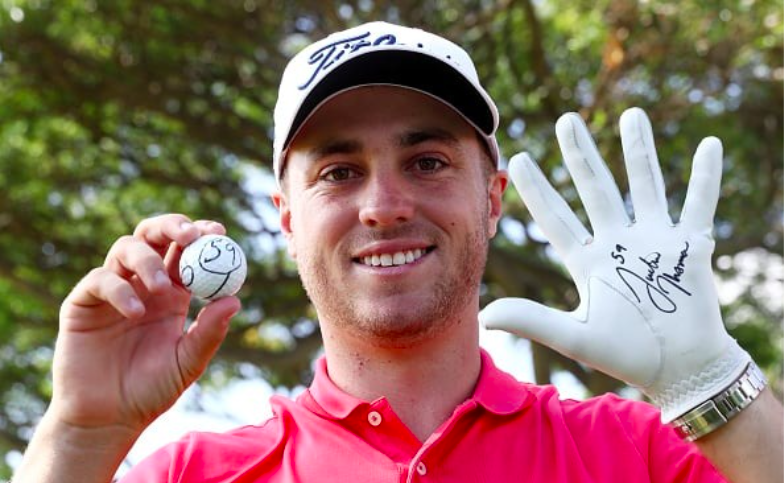
Justin Thomas Net Worth: Unveiling the Wealth of a Golfing Prodigy
Justin Thomas, an elite professional golfer, has made a significant mark in the world of golf with his impressive achievements and growing financial success. This article provides an in-depth analysis of Justin Thomas’s net worth, exploring his career milestones, endorsement deals, and personal investments. We aim to offer a comprehensive view of how Thomas has accumulated his wealth and what factors contribute to his financial standing.
Early Life and Career Beginnings
The Early Years
Justin Thomas was born on April 29, 1993, in Louisville, Kentucky. Growing up in a family with a strong golfing background, Thomas was introduced to the sport at a young age. His father, Mike Thomas, a PGA professional, played a crucial role in shaping his early interest in golf.
Thomas attended St. Xavier High School, where he showcased his golfing talent by winning several junior tournaments. His success in high school golf laid the foundation for his future career as a professional golfer.
Collegiate Achievements
After high school, Justin Thomas enrolled at the University of Alabama, where he played college golf under the guidance of Coach Jay Seawell. During his time at Alabama, Thomas achieved notable success, including winning the 2012 Haskins Award, given to the best college golfer in the country.
His collegiate career was marked by several victories and a national championship, which set the stage for his transition to professional golf.
Turning Professional
Professional Debut
In 2013, Justin Thomas turned professional, joining the PGA Tour after a successful stint on the Web.com Tour. His debut season was promising, with several top-10 finishes that indicated his potential to excel at the highest level of the sport.
Breakthrough Victories
Thomas’s breakthrough came in 2015 when he won his first PGA Tour event at the CIMB Classic. This victory was a significant milestone in his career, demonstrating his ability to compete and succeed on the global stage.
Since then, Thomas has accumulated multiple victories on the PGA Tour, including major championships and prestigious tournaments. His consistent performance and impressive skills have cemented his status as one of the top golfers in the world.
Career Achievements
Major Championships
Justin Thomas’s career has been highlighted by several major victories. One of his most significant achievements was winning the PGA Championship in 2017. This victory not only earned him a substantial prize but also solidified his reputation as a top golfer.
Thomas’s victory at the PGA Championship was a testament to his skill and determination. It marked a turning point in his career, elevating him to the upper echelons of professional golf.
Other Notable Wins
In addition to his major championship victory, Thomas has accumulated several other notable wins on the PGA Tour. Some of his key victories include:
- 2016 SBS Tournament of Champions
- 2019 The Players Championship
- 2020 WGC-FedEx St. Jude Invitational
Each of these victories has contributed to Thomas’s growing net worth and established him as a prominent figure in the world of golf.
Endorsements and Sponsorships
Lucrative Endorsement Deals
Justin Thomas’s success on the golf course has attracted several high-profile endorsements and sponsorships. Companies such as Titleist, Rolex, and Citi have partnered with Thomas, providing him with lucrative endorsement deals.
Titleist has been a significant sponsor, providing Thomas with equipment and apparel that enhance his performance on the course. Rolex and Citi have also contributed to his financial success through endorsement deals that highlight his status as a top golfer.
Impact on Net Worth
Endorsements and sponsorships play a crucial role in augmenting Justin Thomas’s net worth. The financial backing from these companies allows Thomas to focus on his game while benefiting from substantial financial rewards.
Personal Life and Investments
Family and Relationships
Justin Thomas is known for his close-knit family and strong relationships. He is engaged to his longtime girlfriend, Jillian, and the couple’s relationship is a significant aspect of Thomas’s personal life.
Real Estate and Investments
In addition to his earnings from golf and endorsements, Justin Thomas has made several strategic investments in real estate. Owning properties in prime locations contributes significantly to his overall net worth. His investments reflect a well-thought-out approach to securing his financial future beyond his golfing career.
Philanthropy and Community Involvement
Charitable Contributions
Justin Thomas is actively involved in various charitable endeavors. He supports organizations such as The Justin Thomas Foundation, which focuses on providing educational opportunities and supporting youth development programs.
Thomas’s commitment to philanthropy not only enhances his public image but also underscores his dedication to giving back to the community.
Net Worth Estimation
Financial Overview
As of 2024, Justin Thomas’s estimated net worth is approximately $50 million. This figure includes earnings from his PGA Tour victories, endorsement deals, and investments. Thomas’s financial success is a result of his exceptional skills, strategic financial management, and savvy investments.
Comparison with Peers
When compared to other professional golfers, Thomas’s net worth places him among the top earners in the sport. His achievements on the course, combined with lucrative endorsements and smart investments, contribute to his impressive financial standing.
Conclusion
Justin Thomas’s rise from a promising amateur to a top professional golfer is a testament to his talent, hard work, and strategic financial planning. His significant victories, high-profile endorsements, and strategic investments have contributed to his impressive net worth. As Thomas continues to excel on the PGA Tour and engage in philanthropic efforts, his legacy in the world of golf remains firmly established.
Frequently Asked Questions (FAQs)
How did Justin Thomas become a successful professional golfer?
Justin Thomas achieved success through his outstanding performances on the PGA Tour, including major victories and consistent play. His career was marked by several key wins, such as the 2017 PGA Championship.
What are some of Justin Thomas’s major golf achievements?
Major achievements include winning the PGA Championship in 2017, the SBS Tournament of Champions in 2016, and The Players Championship in 2019.
Which companies endorse Justin Thomas?
Justin Thomas has endorsement deals with companies such as Titleist, Rolex, and Citi, which provide him with financial backing and support.
How does Justin Thomas manage his personal life?
Justin Thomas maintains a close relationship with his family and is engaged to his longtime girlfriend. Balancing his personal life with his professional career is an important aspect of his life.
What philanthropic efforts is Justin Thomas involved in?
Justin Thomas supports various charitable organizations through The Justin Thomas Foundation, focusing on educational opportunities and youth development programs.
Golf
Webb Simpson Net Worth: The Rise of a Golfing Legend
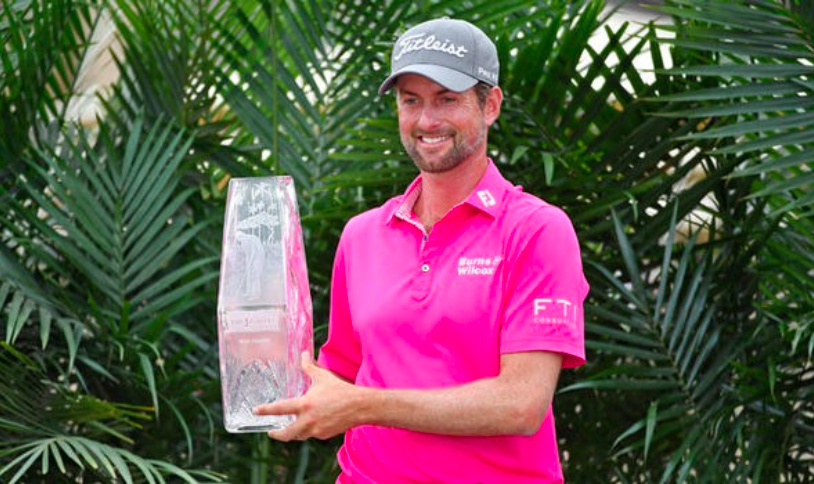
Webb Simpson Net Worth: The Rise of a Golfing Legend
Webb Simpson, an American professional golfer, has captivated fans with his impressive skills and dedication to the sport. Known for his remarkable achievements on the PGA Tour, Simpson’s journey from a promising amateur to a celebrated professional is a testament to his hard work and talent. This comprehensive article explores Webb Simpson’s net worth, career milestones, and personal life, providing a detailed look at the factors that contribute to his financial success.
Early Life and Career Beginnings
A Promising Start
Webb Simpson was born on August 8, 1985, in Raleigh, North Carolina. Growing up in a sports-oriented family, Simpson was introduced to golf at a young age. His father, a passionate golfer himself, played a significant role in nurturing Simpson’s early interest in the sport.
Simpson attended Broughton High School, where he quickly gained recognition for his golfing prowess. His high school career was marked by several notable achievements, including winning the North Carolina High School Athletic Association 4A State Championship.
Collegiate Success
After high school, Simpson continued to hone his skills at the University of Georgia. During his time at college, he became a standout player on the college golf circuit. His success at Georgia, where he was a member of the All-American team, set the stage for his transition to professional golf.
Turning Professional
Early Professional Years
In 2008, Webb Simpson turned professional and joined the Nationwide Tour (now the Korn Ferry Tour). His performance on the tour was impressive, and he quickly gained attention for his potential. Simpson’s breakthrough came in 2011 when he secured his first PGA Tour victory at the Wyndham Championship.
Rising Through the Ranks
Simpson’s victory at the Wyndham Championship marked the beginning of a successful career. Over the years, he continued to build on this success with multiple wins and high finishes in major tournaments. His consistency and skill on the course earned him a spot among the top golfers in the world.
Career Achievements
Major Victories
Webb Simpson’s career has been highlighted by several major victories. One of his most significant achievements came in 2012 when he won the U.S. Open. This victory solidified his reputation as one of the top golfers of his generation.
Simpson’s U.S. Open win was a testament to his ability to perform under pressure. The win not only earned him substantial prize money but also elevated his status in the golfing world.
Other Notable Wins
In addition to his major victory, Simpson has accumulated several other wins on the PGA Tour. Some of his notable wins include:
- 2011 Wyndham Championship
- 2018 The Players Championship
- 2019 RSM Classic
Each of these victories has contributed to Simpson’s growing net worth and established him as a prominent figure in professional golf.
Endorsements and Sponsorships
High-Profile Endorsements
Webb Simpson’s success on the golf course has attracted several high-profile endorsements and sponsorships. Companies such as Titleist, FootJoy, and Ping have partnered with Simpson, providing him with lucrative endorsement deals.
Titleist and FootJoy have been particularly significant in Simpson’s career, offering him equipment and apparel that enhance his performance on the course. These endorsements not only contribute to Simpson’s income but also bolster his public image.
Impact on Net Worth
Endorsements and sponsorships play a crucial role in augmenting Webb Simpson’s net worth. The financial backing from these companies allows Simpson to focus on his game while benefiting from substantial financial rewards.
Personal Life and Investments
Family Life
Webb Simpson is married to his college sweetheart, Dowdie. The couple has four children together, and Simpson is known for his strong family values. Balancing his professional career with family life has been an important aspect of Simpson’s personal life.
Real Estate Investments
In addition to his earnings from golf and endorsements, Simpson has made several smart investments in real estate. Owning properties in prime locations contributes significantly to his overall net worth. His investments reflect a strategic approach to securing his financial future beyond his golfing career.
Philanthropy and Community Involvement
Charitable Contributions
Webb Simpson is actively involved in various charitable endeavors. He supports organizations such as The First Tee, which promotes golf among young people, and Operation Smile, which provides medical treatment to children in need.
Simpson’s commitment to philanthropy not only enhances his public image but also underscores his dedication to giving back to the community.
Net Worth Estimation
Financial Overview
As of 2024, Webb Simpson’s estimated net worth is approximately $25 million. This figure includes earnings from his PGA Tour victories, endorsement deals, and investments. Simpson’s financial success is a result of his hard work, skill, and strategic financial management.
Comparison with Peers
When compared to other professional golfers, Simpson’s net worth places him among the top earners in the sport. His achievements on the course, combined with lucrative endorsements and smart investments, contribute to his impressive financial standing.
Conclusion
Webb Simpson’s journey from a promising amateur to a successful professional golfer is a testament to his dedication and skill. His significant victories, high-profile endorsements, and strategic investments have contributed to his impressive net worth. As Simpson continues to excel on the PGA Tour and engage in philanthropic efforts, his legacy in the world of golf remains firmly established.
Frequently Asked Questions (FAQs)
How did Webb Simpson rise to prominence in professional golf?
Webb Simpson gained prominence through his impressive performances on the PGA Tour, including his major victory at the 2012 U.S. Open. His consistent play and multiple wins have solidified his reputation as a top golfer.
What are some of Webb Simpson’s most notable golf achievements?
Notable achievements include his victory at the 2012 U.S. Open, the 2011 Wyndham Championship, the 2018 Players Championship, and the 2019 RSM Classic.
What companies have endorsed Webb Simpson?
Webb Simpson has endorsement deals with companies such as Titleist, FootJoy, and Ping, which provide him with equipment and apparel.
How does Webb Simpson balance his professional and personal life?
Simpson balances his career with family life by maintaining strong family values and making time for his wife and four children. His personal life is important to him, and he ensures it complements his professional commitments.
What philanthropic efforts is Webb Simpson involved in?
Webb Simpson supports organizations like The First Tee and Operation Smile, contributing to causes that promote youth golf and provide medical care to children in need.
Golf
Louis Oosthuizen’s Net Worth: A Detailed Look at His Wealth

Louis Oosthuizen’s Net Worth: A Detailed Look at His Wealth
Louis Oosthuizen, a name synonymous with golfing excellence, has left an indelible mark on the sport. With a career filled with remarkable achievements, including a major championship win at the 2010 Open Championship, Oosthuizen has become one of the most respected golfers in the world. But beyond his success on the greens, many fans and followers are curious about his financial standing. In this article, we delve deep into Louis Oosthuizen’s net worth, exploring the various sources of his income, his lifestyle, and how his wealth has evolved over the years.
Early Life and Career Beginnings
Humble Beginnings in South Africa
Louis Oosthuizen was born on October 19, 1982, in Mossel Bay, South Africa. Growing up in a modest family, Oosthuizen’s journey to becoming a world-class golfer was anything but easy. His love for the game was evident from a young age, and despite financial constraints, he pursued his passion with unwavering determination.
Breaking into the Professional Golf Scene
Oosthuizen’s professional career began in 2002 when he joined the Sunshine Tour, the main professional golf tour in Southern Africa. His early years were marked by consistent performances, and by 2004, he had secured his first victory. This win was a significant milestone, as it not only boosted his confidence but also laid the foundation for his future success on the international stage.
Major Career Milestones
The 2010 Open Championship
The pinnacle of Louis Oosthuizen’s career came in 2010 when he won The Open Championship at St Andrews. This victory catapulted him to global fame and significantly impacted his net worth. Oosthuizen’s performance was nothing short of spectacular, as he led the tournament from start to finish, eventually winning by a comfortable margin of seven strokes.
Consistent Performances in Major Championships
Since his triumph at The Open, Oosthuizen has continued to perform well in major championships. He has finished as a runner-up in all four majors, including the Masters, U.S. Open, and PGA Championship. These consistent top-tier finishes have not only solidified his reputation as a world-class golfer but have also contributed significantly to his earnings.
Louis Oosthuizen’s Earnings and Endorsements
Prize Money from Tournaments
One of the primary sources of Louis Oosthuizen’s net worth is the prize money he has earned from various tournaments. Over the years, his consistent performances have ensured a steady flow of income. As of 2024, his career earnings from professional golf tournaments alone are estimated to be in the millions.
Lucrative Endorsement Deals
Apart from his earnings on the golf course, Oosthuizen has also secured several lucrative endorsement deals. Companies such as Ping, Titleist, and FootJoy have partnered with him, recognizing his value as a brand ambassador. These endorsements have not only increased his income but have also played a crucial role in enhancing his global brand image.
Investments and Business Ventures
Louis57 Wines
Louis Oosthuizen is not just a golfer; he is also an astute businessman. One of his most notable ventures is Louis57 Wines, a brand that reflects his passion for winemaking. Based in South Africa, Louis57 Wines has grown significantly since its inception, contributing to Oosthuizen’s overall net worth.
Real Estate Investments
In addition to his business ventures, Oosthuizen has made several smart real estate investments. He owns properties in South Africa and the United States, including a stunning estate in Florida. These properties not only serve as luxurious residences but also add to his financial portfolio.
Louis Oosthuizen’s Lifestyle and Philanthropy
A Simple Yet Luxurious Lifestyle
Despite his wealth, Louis Oosthuizen is known for leading a relatively simple life. He enjoys spending time with his family on his farm in South Africa, where he indulges in his love for agriculture. However, this simplicity does not mean he doesn’t enjoy the finer things in life. Oosthuizen’s homes, cars, and lifestyle choices reflect a man who appreciates luxury, albeit in a modest way.
Philanthropic Efforts
Oosthuizen is also deeply committed to giving back to the community. Through his Louis Oosthuizen Junior Golf Academy, he supports young and aspiring golfers in South Africa. His philanthropic efforts extend beyond golf, as he is involved in various charitable initiatives aimed at improving the lives of underprivileged communities.
Comparing Louis Oosthuizen’s Net Worth with Other Golfers
Oosthuizen vs. Ernie Els
When comparing Louis Oosthuizen’s net worth to other South African golfing legends like Ernie Els, it’s clear that both have made significant contributions to the sport. While Els’ net worth is higher, Oosthuizen’s steady growth in earnings and investments indicates that he is on a similar trajectory.
HGlobal Comparisons
On a global scale, Oosthuizen’s net worth may not rival the likes of Tiger Woods or Phil Mickelson, but it is still substantial. His prudent financial decisions, coupled with his success on the course, have ensured that he remains one of the wealthiest golfers in the world.
The Future of Louis Oosthuizen’s Net Worth
Upcoming Tournaments and Potential Earnings
As Oosthuizen continues to compete at the highest level, there is no doubt that his net worth will keep growing. His participation in upcoming tournaments presents opportunities for further earnings, both in terms of prize money and endorsement deals.
Expanding Business Ventures
In addition to his golfing career, Oosthuizen’s business ventures are likely to expand. With the success of Louis57 Wines and his real estate investments, it’s expected that he will continue to diversify his income streams, further increasing his net worth.
Conclusion
Louis Oosthuizen’s journey from a small town in South Africa to becoming one of the wealthiest golfers in the world is nothing short of inspirational. His net worth is a testament to his hard work, dedication, and smart financial decisions. As he continues to compete and grow his business ventures, there’s no doubt that Oosthuizen’s financial future looks incredibly bright.
Frequently Asked Questions (FAQs)
What is Louis Oosthuizen’s current net worth?
As of 2024, Louis Oosthuizen’s net worth is estimated to be around $40 million. This figure includes his earnings from golf tournaments, endorsements, business ventures, and real estate investments.
How did Louis Oosthuizen make his fortune?
Louis Oosthuizen made his fortune through a combination of prize money from professional golf tournaments, lucrative endorsement deals, and smart investments in businesses like Louis57 Wines and real estate.
Does Louis Oosthuizen have any other business ventures?
Yes, in addition to his golf career, Louis Oosthuizen owns Louis57 Wines and has made several real estate investments. These ventures have contributed significantly to his net worth.
How does Louis Oosthuizen spend his money?
Louis Oosthuizen leads a relatively simple life, with a focus on family and agriculture. However, he also enjoys the luxuries of life, owning properties in South Africa and the United States. He is also actively involved in philanthropy, particularly in supporting young golfers.
What are Louis Oosthuizen’s plans for the future?
Louis Oosthuizen plans to continue competing in professional golf tournaments while expanding his business ventures. His focus remains on growing his brand, increasing his net worth, and giving back to the community through his philanthropic efforts.
-

 NBA4 months ago
NBA4 months agoLaMelo Ball Net Worth: A Comprehensive Look at the NBA Star’s Financial Empire
-

 Football5 months ago
Football5 months agoMeet the World Football Celebrities and Their Stories
-
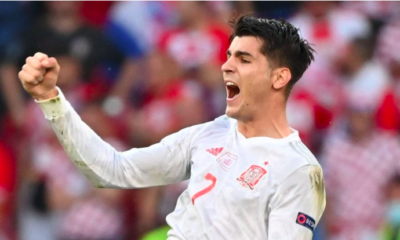
 Football4 months ago
Football4 months agoEuro 2024: Alvaro Morata Speaks Out About ‘No Respect’ in Spain
-

 Game5 months ago
Game5 months agoThe Ultimate Guide to General Multi-Sport Events
-

 Football4 months ago
Football4 months agoEuro 2024 Power Rankings: Spain Remains Dominant Ahead of Semifinals
-
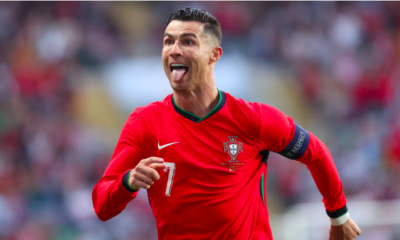
 Football4 months ago
Football4 months agoRonaldo’s Business Ventures and Investments (CR7 Brand)
-

 NBA5 months ago
NBA5 months agoTop NBA Celebrities in the World: The Biggest Stars
-
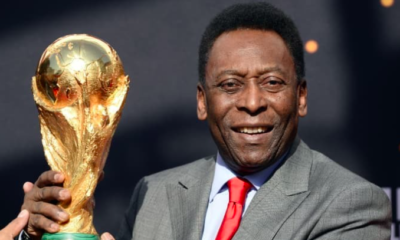
 Sports6 months ago
Sports6 months agoPele: The Legendary Journey of Football’s Greatest Icon | The Immortal King of Football




